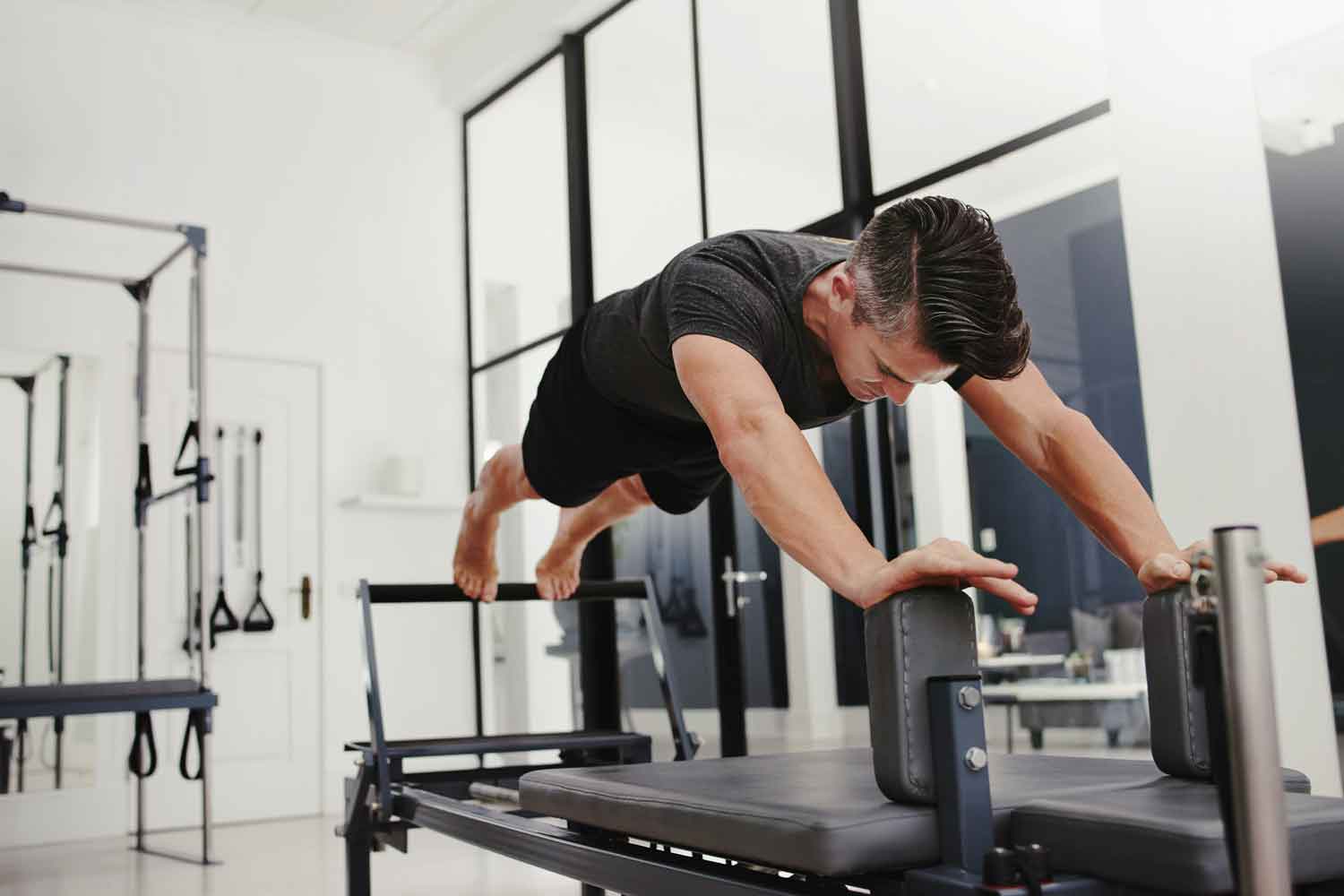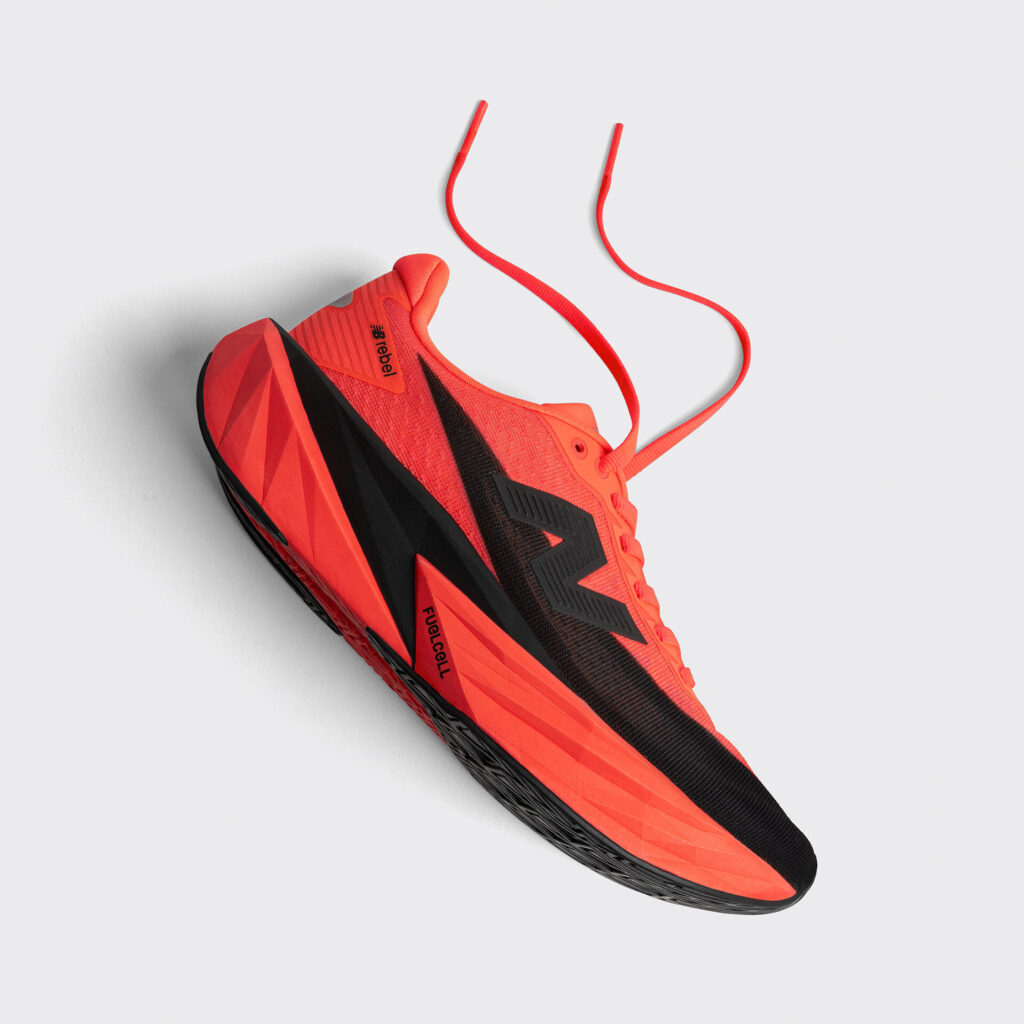
If you asked me 10 years ago whether I’d ever try my hand at Pilates, I would have laughed you off. Hell, it even took some convincing from my colleagues for me to realise it wasn’t just stretching for 45 minutes. But the ‘Tahs are doing yoga, the Blues are ‘earthing’ and even the SAS have given meditation a go – suddenly no exercise is off limits and workouts are breaking through gender stereotypes.
So, I decided to team up with the good people at VIVE Active who put a strong emphasis on making the class an experience – think beaming lights, futuristic furnishings and music synced to the workout.
Sitting at 90kg, looking like a Dorito (yes, I rarely turn up to leg day) and plagued by injuries caused by on-field rugby collisions, I knew this might just be the perfect opportunity to reset my body and tend to my aches.
So here are six things I learned after taking up pilates for a month:
1. Improved Core
When you’re someone who spends more time trying to increase size and going heavier, core is an afterthought. After all, no one cares how heavy you can Russian twist. But for the first time in years, I had definition on my mid-section. Although, it wasn’t just my v-line that started to show, my core improved ten-fold too – both my lower back and my abdominal region. Previously, I’d complain that my best days were behind me as I’d hobble out of bed. Now I feel like I’ve recaptured my youth, as mobile as ever.
But Vive Active Head Trainer Alexis Fernandez isn’t surprised by the changes to my body.
“Pilates focuses on not only the rectus abdominis – ‘six pack abs’ – but also the transverse abdominis (which sits under the visible abs) and the pelvic floor muscle,” explains Alexis.
“These core muscles are the ones that improve posture, eliminate back pain, allowing you to lift heavier and to hold positions for longer. It acts as a belt around your torso and draws in your waist and back. Many other typical ‘abs’ exercises such as sit ups focus on the rectus abdominis only and neglect the other core muscles.”
2. I Lifted More Weight In The Gym
This surprised me the most. In my experience, in order to improve strength, you not only need to consistently lift heavy, but you also need to gradually increase the amount of weight every time. Truth is, I was concerned that I’d come out the other side struggling to pick up the plates I’m accustomed to.
Bizarrely, this wasn’t the case. Alexis explains that pilates can actually help with resistance training because it gives you a strong foundation so your weaknesses don’t get in the way of heavy compound lifts.
“Pilates is a great supplementation to your strength and resistance training as it seriously improves your posture, spinal and pelvic alignment and core strength,” she tells me.
“This is especially helpful when performing heavy compound exercises such as deadlifts and squats, where form and alignment are crucial in order to increase the load.”
3. I Shed Weight Quick
With summer just taking off and my rig not quite in beach-shape, pilates actually became a viable solution to my skin fold woes. While the workout naturally gets your heart racing, there are even classes that can offer a little extra to you help you go from dad bod to beach god. After the month-long research, I dropped five kilogram and a more defined mid-section was a natural bi-product.
“High-intensity reformer pilates (like we offer at the studio, with added dumbbells) is a great way to drop fat, as your muscles are under tension for almost the entire session, with a mix of slow and fast movements allowing your heart rate to rise and drop similar to interval training, and minimal rests throughout the session,” Alexis continues.
“It is intense but the session goes by fast as it keeps you engaged throughout the entire workout.”
4. It Won’t Get You Jacked
If there’s one thing I’ve learnt over the years, building muscle involves a lot of trying and testing – isolating muscle groups, push-pull days, changing the recovery time – there are a whole host of methods one can use to build muscle. And having tried all of the above, I can tell you that there isn’t one size that fits all, especially when you’re looking to be more Arnie than AFL player. However, there is one thing in common – shifting heavy tin in the gym. And unfortunately, pilates doesn’t fit that bill.
While you’ll see your number lower on the scale – largely due to fat loss – and sure, there will be some muscle gain, this particular type of workout doesn’t see the same results as the Rock’s favourite sweat session.
As found out in my experiment, substituting my regular gym sessions with pilates saw hypertrophy decrease and I put this down to the high repetition/low weight exercises involved in the popular form of exercise. And while there’s the option to increase weight and resistance, unfortunately, given the high repetitions, it may take months for your body to be able to lift heavy with smaller rest time.
This isn’t to discredit pilates, but if you’re someone who wants sleeve-busting arms, you’ll need to ensure you’re also incorporating regular weight sessions throughout the week and you’re in calorie surplus.
5. Body Parts I Neglected Got Found Out
I can tell you right now: this will become apparent both during and after the first session – both a lack of strength in departments you’ve neglected and the pain you’ll endure having used those muscles for the first time. But that’s the beauty of Pilates – it’s a total body workout which means no body part is left untouched. And you’ll feel it, trust me.
While you may have untended areas of your torso, don’t worry, you’ll see changes quick. Only a few sessions a week is all it takes for you to get results and as quickly as a couple weeks.
“Ideally you want to be doing three high intensity reformer pilates sessions per week to see a really noticeable change in your strength, posture and appearance,” Alexis continues.
“You will start to feel the difference after two weeks and you will start to see a visible difference after as little as four weeks. “
6. My Posture Improved
Before taking on the challenge, anecdotal evidence suggested that a major benefit would be improved posture. And boy, were they right.
Not only did I find myself with a more pleasant posture ( goodbye slouched shoulders and unnecessary leaning), but my clothes also fit better.
Turns out the science behind it stacks up.
“As pilates focuses on the deeper abdominal muscles as mentioned before, and a combination of unilateral and contralateral movements, you are able to pinpoint imbalances and weaknesses on one side more than the other, and the exercises help balance this out. The focus on alignment within the movements allow for better posture inside and outside of the pilates room,” Alexis adds.
“Pilates also focuses on your glutes, which actually play a hugely important functional role too. They’re not often trained in isolation and can sometimes be classed as ‘lazy’. When they’re weak, other muscles like your hip flexors, quads and ITB can become overactive, which can affect your posture and cause back and knee pain. Improving glute strength often has the knock-on effect of fixing postural problems too.”














